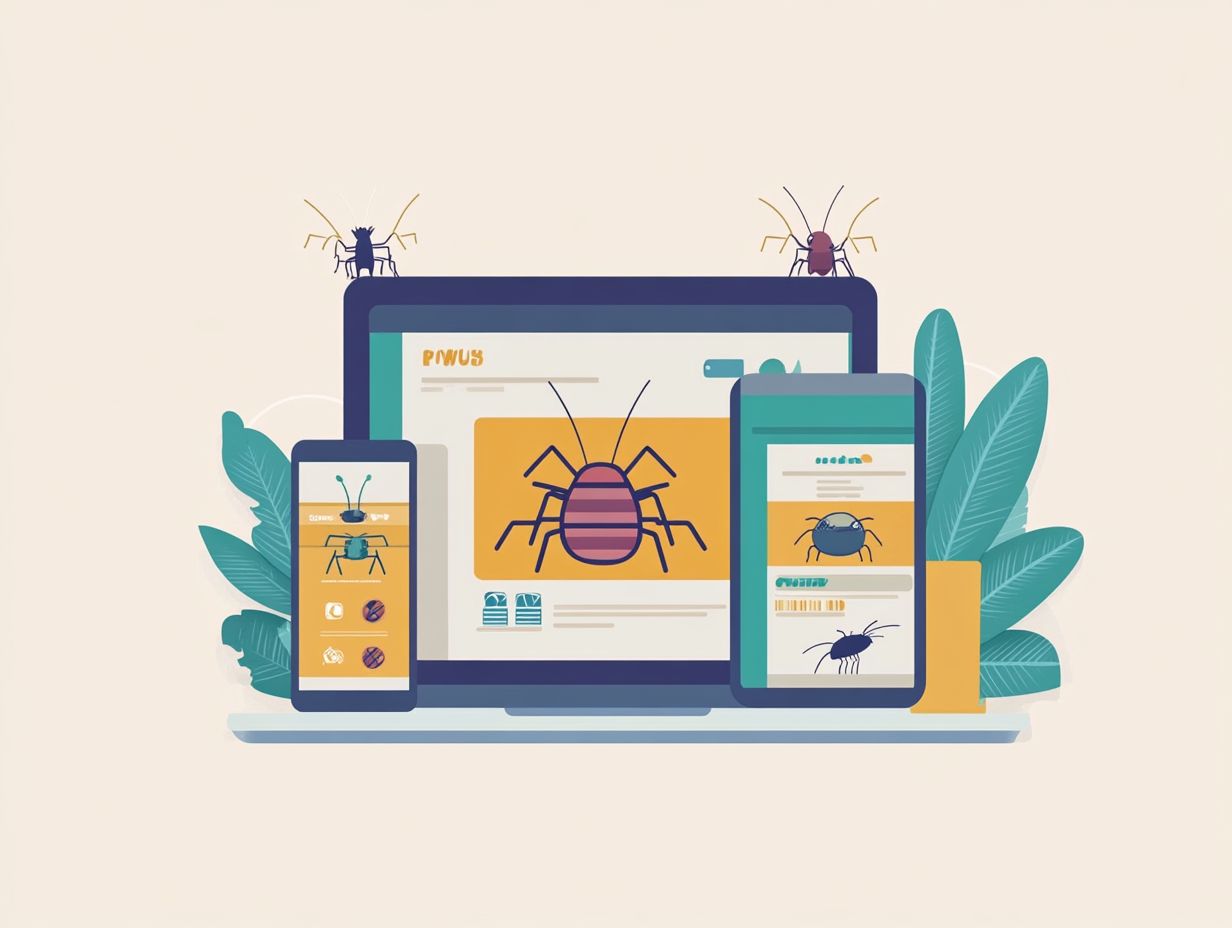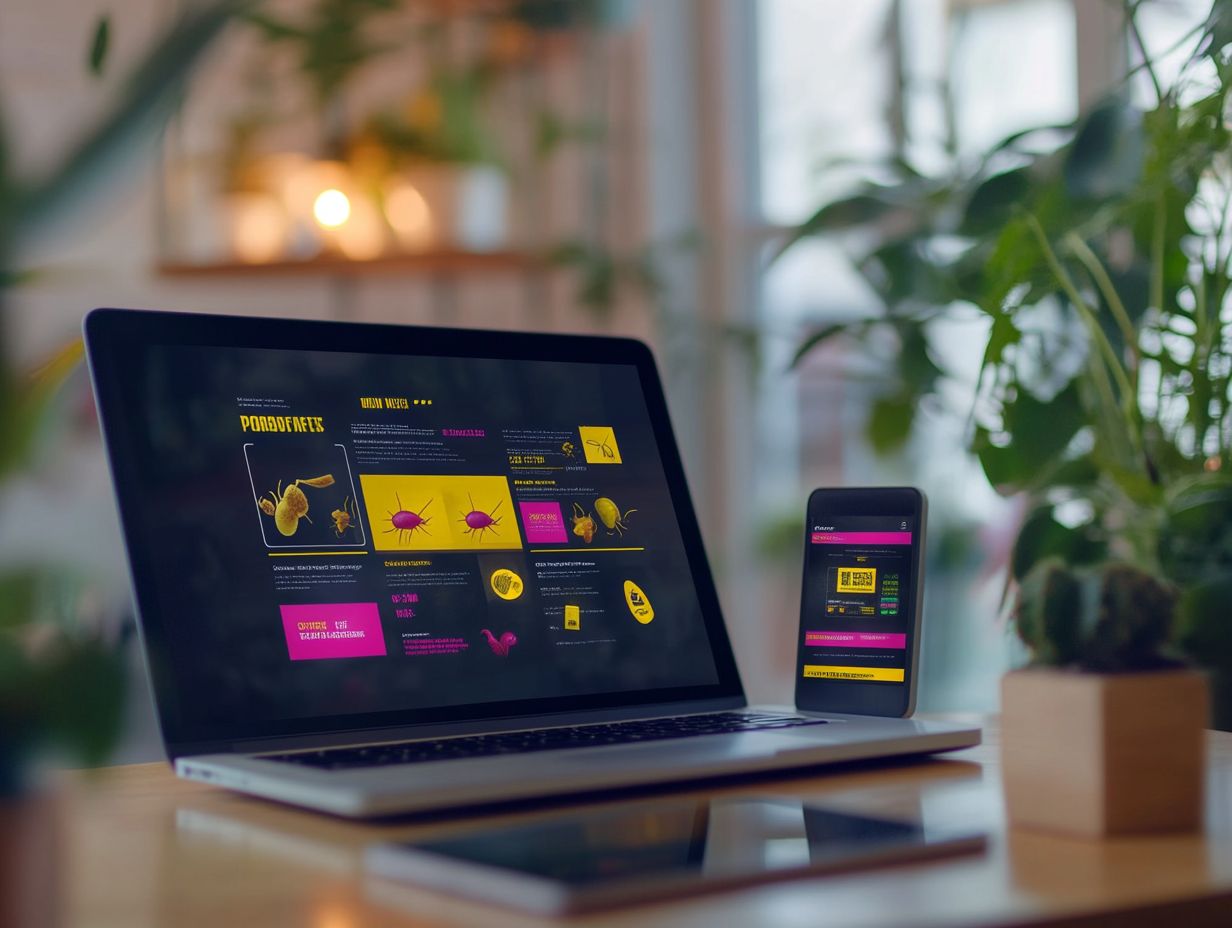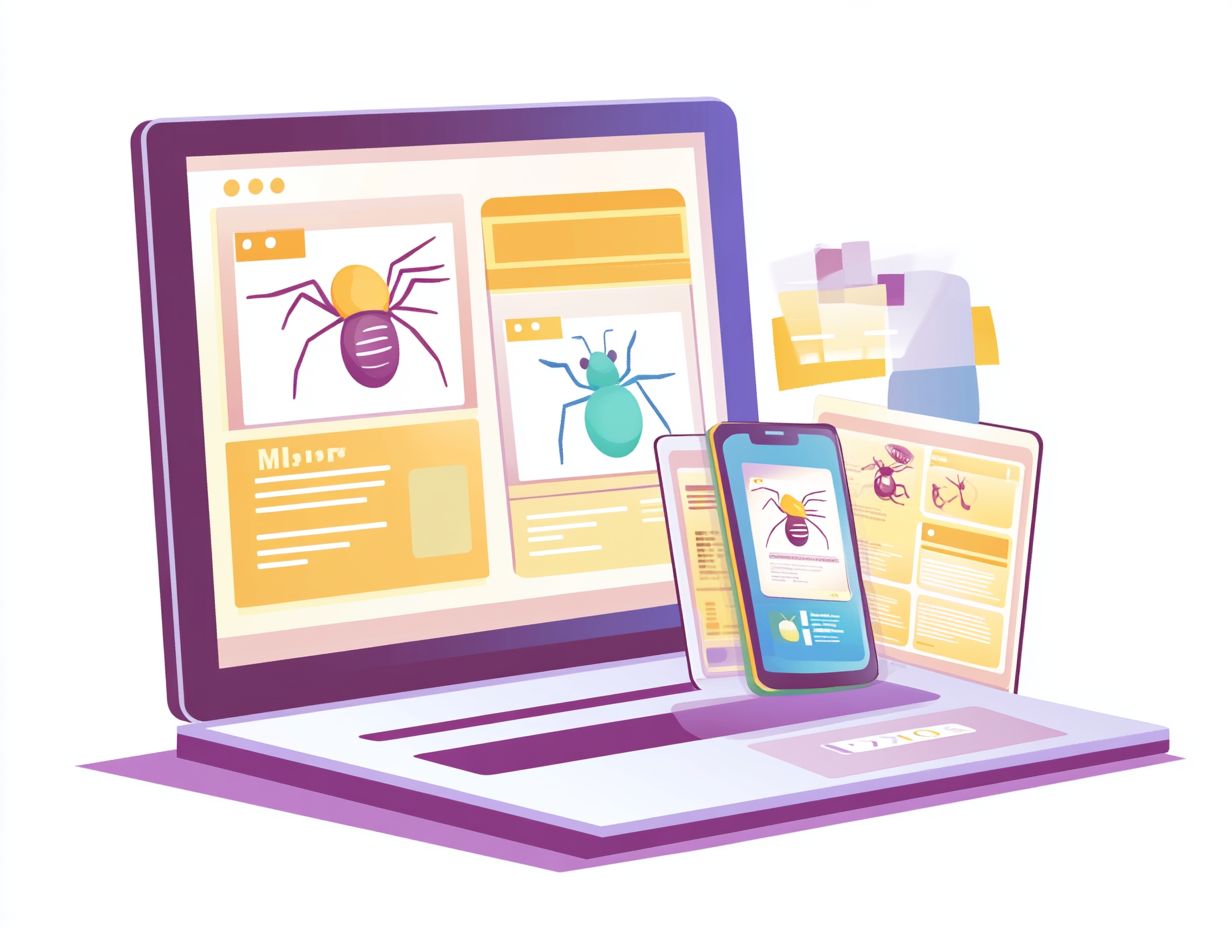In today’s digital age, you really need to embrace online advertising if you want your pest control company to stay competitive and effectively reach your customers.
With the power to target specific demographics and measure results, digital advertising lets you engage with a broader audience while offering cost-effective marketing solutions.
This article dives into why digital advertising is essential for pest control businesses, the various types you can use, and how to craft an effective strategy that truly resonates with potential clients.
Explore how to elevate your pest control services in the digital landscape and drive some meaningful results.
Why is Digital Advertising Important for Pest Control Companies?

Digital advertising is essential for pest control companies because it helps you reach a wider audience and build a solid online presence. In today’s world, where customers are actively looking for pest management solutions online, using digital platforms lets you connect with potential clients right when they need your services.
With targeted ad campaigns and smart online marketing strategies, you can boost your brand awareness, improve your customer acquisition efforts, and ultimately increase your sales. By taking advantage of tools like Google Ads and social media marketing, you can optimize your outreach and make sure you stand out in a crowded market.
1. Reach a Larger Audience
Reaching a larger audience is one of the biggest perks of digital advertising for pest control companies, and it really helps you generate leads effectively. By running various digital campaigns, you can target specific demographics in your service area, which gives your online visibility a nice little boost. This wider reach ensures that your pest control services connect with potential customers who are actively on the hunt for pest extermination solutions.
To really amp up your lead generation, it's crucial to dive into techniques like audience segmentation. This approach allows you to craft messages that speak directly to local concerns, making your outreach much more effective. Utilizing platforms like social media, email marketing, and Google Ads can further enhance your exposure. Plus, keeping your local listings accurate not only helps people find you but also builds trust in your community.
By employing strategies such as creating engaging content, showcasing customer testimonials, and optimizing your website for search engines, you can significantly boost your chances of reaching and converting a broader audience.
2. Target Specific Demographics
One of the great perks of digital advertising is that you can target specific demographics, which lets pest control companies fine-tune their marketing strategies like a pro. By using precise ad targeting techniques like geo-targeting, you can zero in on local markets where pest management services are in high demand.
This targeted approach not only boosts your conversion rate but also makes sure you're using your marketing resources as efficiently as possible.
Getting a grasp on customer demographics is crucial for you. It helps you craft personalized messages that really hit home with your audience’s unique needs and concerns.
Tools like Google Analytics or social media insights can seriously up your game in audience segmentation by giving you valuable data on client behavior, preferences, and trends.
Using A/B testing can help you refine your ad effectiveness, allowing you to figure out which messages get the best reactions. As you adopt these savvy targeting strategies, you'll find that the chances of engaging potential customers skyrocket, leading to better brand loyalty and higher retention rates.
3. Cost-effective Marketing
Digital advertising is a smart, cost-effective marketing solution for pest control companies like yours, letting you stretch your advertising budget while reaping a high return on investment (ROI). With pay-per-click (PPC) campaigns, you get to control your spending and only pay for actual clicks you receive, making it a budget-friendly option. Plus, using marketing automation helps streamline your campaigns, making it easier to reach potential customers efficiently.
Unlike traditional advertising methods, which often come with big upfront costs and ongoing expenses with no guarantees, PPC allows you to target specific demographics effectively. This targeted approach means your ads will reach people who are actively searching for pest control services, leading to better engagement rates.
By combining solid budgeting strategies with advanced marketing automation tools, you can analyze your campaign performance in real-time and adjust your tactics on the fly. This adaptability not only boosts your campaign’s effectiveness but also enhances your overall ROI, ensuring that every advertising dollar you spend is wisely used and reaches the right audience.
4. Measurable Results
One of the coolest things about digital advertising is that you can track and measure results effectively. This is super important for pest control companies looking to optimize their marketing efforts. By using analytics tools, you can keep an eye on engagement metrics, evaluate how different campaigns are performing, and make decisions based on solid data.
A/B testing becomes your best friend in refining ad copy and call-to-action strategies, making sure your pest control services pack a punch in the digital world.
This level of insight lets you spot trends and patterns in online inquiries, giving you a clear view of how customers are interacting with your ads. Knowing which ads generate the most inquiries not only helps you fine-tune future campaigns but also aids in spending your budget more wisely.
A/B testing allows you to play around with different messaging or visuals, so you can boost engagement. By continuously tweaking your campaigns based on measurable results, you can keep your marketing strategies fresh and effective, leading to higher conversion rates and happier customers.
What are the Different Types of Digital Advertising for Pest Control?

You have several types of digital advertising at your disposal to boost your pest control marketing efforts, each with its unique perks and strategies.
Take search engine advertising, for example; it lets your business shine in those search engine results pages. Then there’s social media advertising, which is all about building community engagement. You can pick the methods that align best with your goals.
Don’t overlook display advertising and video marketing either; they offer creative ways to connect with potential customers, showcase your services, and effectively build brand awareness.
1. Search Engine Advertising
Search engine advertising, especially through platforms like Google Ads, can be a game-changer for pest control companies looking to dive into pay-per-click (PPC) advertising. By carefully picking competitive keywords and fine-tuning your ad copy, you can boost your visibility in search engine results and pull in more organic traffic to your website. This approach lets you capture leads from users actively searching for pest management solutions, which ups your chances of converting them into customers.
Besides identifying relevant keywords that reflect your specific services, you should also focus on crafting ad copy that truly speaks to your target audience. Highlighting unique selling points, like eco-friendly solutions or speedy emergency response times, can really help your services stand out in a crowded marketplace.
By blending PPC advertising with organic search strategies, you not only maximize your online presence but also create a more sustainable digital marketing approach. Striking a balance between paid efforts and effective SEO techniques will help you build a solid foundation that drives consistent leads and nurtures customer relationships over time.
2. Social Media Advertising
Social media advertising is a game-changer for your digital marketing strategy in the pest control industry. It helps you engage with customers and build brand loyalty. By using platforms like Facebook, Instagram, and Twitter, you can connect with your audience on a personal level, showcasing your pest control services and expertise. With targeted campaigns, you'll be able to reach specific customer demographics and create content that really resonates, boosting your online presence.
Creating engaging and informative content is key. It not only educates your audience about pest issues but also positions you as a trusted authority in the field. Think about using video tutorials, customer testimonials, and interactive posts to enhance user interaction. When your followers feel engaged, they’re more likely to share their experiences.
Selecting the right digital platforms based on demographic insights means your advertising efforts will focus where potential customers are most active. By honing in on customer-centric strategies and using analytics to track performance, you can effectively grow a loyal customer base and expand your market reach.
3. Display Advertising
Display advertising is a fantastic way for you to boost your brand visibility and connect with potential customers using visually engaging content. By tapping into multimedia advertising strategies, you can create eye-catching banners and ads that pop up on various websites, grabbing users’ attention. And don’t forget about retargeting! This nifty tactic lets you remind past visitors about your pest control services and encourages them to come back for more.
This approach not only ups your chances of conversion but also helps build familiarity with your brand, making it the first thing people think of when they need pest control solutions. Using retargeting techniques allows you to make the most of your advertising budget by focusing on audiences that are already interested in what you offer.
To really make your campaigns shine, measuring ad impressions is key. Understanding how often potential customers see your ads can give you valuable insights into engagement levels and how effective your campaigns are. This data-driven strategy give the power tos you to fine-tune your approach for an even bigger impact.
4. Video Advertising
Video advertising is quickly becoming a go-to strategy for pest control companies looking to boost user engagement and brand awareness. By crafting informative and entertaining video content, you can educate potential customers about your pest management solutions while showcasing your expertise and building trust. Plus, you can spread your video marketing across various channels, like social media and your website, to maximize your reach and impact.
As more consumers turn to digital platforms for information, using video content allows you to tap into that trend effectively. Engaging testimonials, before-and-after visuals, and expert advice can really resonate with your audience, making them more likely to share your content and recommend your services.
To enhance discoverability, consider strategies like optimizing your videos for SEO, targeting specific demographics with paid ads, and leveraging platforms like YouTube and Instagram Stories. When creating impactful videos, focus on clear messaging, high-quality visuals, and a strong call to action. This way, each video not only informs but also encourages viewers to choose your services.
How to Create an Effective Digital Advertising Strategy for Pest Control?

Creating an effective digital advertising strategy for your pest control business means taking a well-rounded approach that includes several important elements.
First, you should define your target audience to make sure your marketing efforts align with their demographics and needs. Setting clear goals and objectives will guide your campaigns and keep you on track. Plus, crafting compelling ad content is essential for capturing attention and driving engagement.
Finally, don’t forget to monitor and analyze your results—this will help you refine your strategy and achieve optimal performance in the competitive pest control industry.
1. Define Your Target Audience
Defining your target audience is the key to an effective digital advertising strategy for your pest control company—it really shapes everything you do in marketing. By getting to know the customer demographics in your service area, you can tailor your campaigns to meet specific needs and preferences, which makes the user experience much better. This targeted approach ensures that your advertising reaches the right people who are actively looking for pest management solutions.
To make this happen, you need to conduct some thorough market research. Utilizing surveys, interviews, and analytics tools can help you gather insights about potential customers' behaviors, locations, and what pest-related concerns they have.
By analyzing these demographics, you can craft messages that truly resonate with specific groups, like homeowners dealing with seasonal infestations or businesses needing routine pest inspections. Understanding the user experience through website analytics and feedback also helps you create more engaging advertising content. When potential clients feel understood and appreciated, they are much more likely to respond positively, driving conversions and building long-term relationships.
2. Set Goals and Objectives
Setting clear goals and objectives is key for measuring how well your digital advertising strategy is performing in the pest control industry. When you establish specific, measurable goals, you can keep an eye on your advertising performance throughout the entire conversion funnel—from the moment someone first engages with your ad to the final sale. This structured approach helps you evaluate how effective your campaigns are and make any necessary adjustments along the way.
For example, you might decide to aim for a 30% increase in your website traffic within the next six months or to boost your lead conversion rate by 25% during the same timeframe. It’s also important to align these goals with your broader business objectives, like increasing overall market share or improving customer retention. This way, you ensure that every digital effort you make contributes to your growth and profitability.
Using analytics tools can really help you monitor your progress in real-time. You’ll be able to assess the impact of specific strategies and refine your tactics based on data-driven insights. This reinforces the important connection between setting goals and achieving successful digital marketing initiatives.
3. Choose the Right Platform
Choosing the right platform for your digital advertising can really make a difference in how successful your pest control company becomes. Depending on who you're trying to reach and what your marketing goals are, different advertising platforms—like Google Ads, social media, or display networks—might work better for you.
It’s super important to optimize for local SEO, as this helps boost your digital footprint and makes you more visible in local searches.
Each platform has its own perks—Google Ads can give you that instant visibility and reach, while social media helps you engage with your audience and build a community. But don't forget that these platforms also come with their own challenges, like managing costs and dealing with ad fatigue.
Plus, really understanding local SEO can take your online presence up a notch by targeting specific areas, making it easier for potential clients to find the services they need nearby.
By effectively combining these strategies, you can not only attract more customers but also foster lasting relationships within your community.
4. Create Compelling Ad Content
Creating compelling ad content is crucial for grabbing the attention of potential customers and encouraging them to engage with your brand. Your ad copy should be concise and persuasive, with a strong call-to-action that motivates viewers to take the next step—whether it's visiting your website or requesting a service. When your content resonates with the audience, it can significantly boost the effectiveness of your digital advertising strategy.
To craft content that hits the mark, you need to understand the specific interests, values, and pain points of your target audience. This way, you can tailor your messaging to align perfectly with what they’re looking for, making your ads more relatable and impactful.
Using engaging language that stirs emotion or curiosity can be a game changer. Phrases like "Get started today" or "Join our community now" not only spark immediate responses but also create a sense of urgency that can lead to higher conversion rates.
Ultimately, the magic of persuasive ad copy lies in its ability to connect authentically with potential customers, ensuring that every word serves a purpose and drives action.
5. Monitor and Analyze Results

Monitoring and analyzing results is a critical step in fine-tuning your digital advertising strategy for your pest control business. By using analytics tools, you can track engagement metrics, assess how your campaigns are performing, and run A/B tests to figure out what really resonates with your audience. This ongoing feedback loop lets you make data-driven adjustments that boost your campaign's effectiveness over time.
Pay special attention to metrics like click-through rates, conversion rates, and return on ad spend—they're essential for understanding how well your ads are performing. Tools like Google Analytics, HubSpot, or Facebook Ads Manager can give you the insights you need into these key performance indicators.
A/B testing is particularly valuable because it allows you to try out different ad variations and see which elements—from headlines to images—capture the most interest and engagement. By interpreting this data, you can make informed decisions that continually sharpen your tactics, ensuring you meet your audience's needs and drive better results.
Frequently Asked Questions
What is pest control digital advertising?
Pest control digital advertising refers to the use of online platforms and tools to promote pest control services to potential customers. This can include paid ads, social media marketing, email marketing, and more.
Why is pest control digital advertising important?
With more people turning to the internet to find services, having a strong online presence through digital advertising can help pest control businesses reach a larger audience and attract new customers.
What are the benefits of using digital advertising for pest control?
Digital advertising allows pest control businesses to target specific demographics, track the effectiveness of their ads, and have a wider reach compared to traditional advertising methods. It is also more cost-effective and allows for more personalized marketing strategies.
How can I get started with pest control digital advertising?
To get started with pest control digital advertising, you can research and choose the best online platforms for your business, create engaging ad content, and set a budget for your campaigns. It may also be helpful to seek the assistance of a digital marketing agency or specialist.
What are some effective strategies for pest control digital advertising?
Some effective strategies for pest control digital advertising include creating targeted ads for specific pest problems, utilizing social media platforms for customer engagement, and regularly updating and optimizing ad content.
What should I consider when choosing a digital advertising platform for pest control?
When choosing a digital advertising platform for pest control, consider your target audience, budget, and the features and tools offered by the platform. It is also important to track and analyze the success of your ads to determine the most effective platform for your business.

